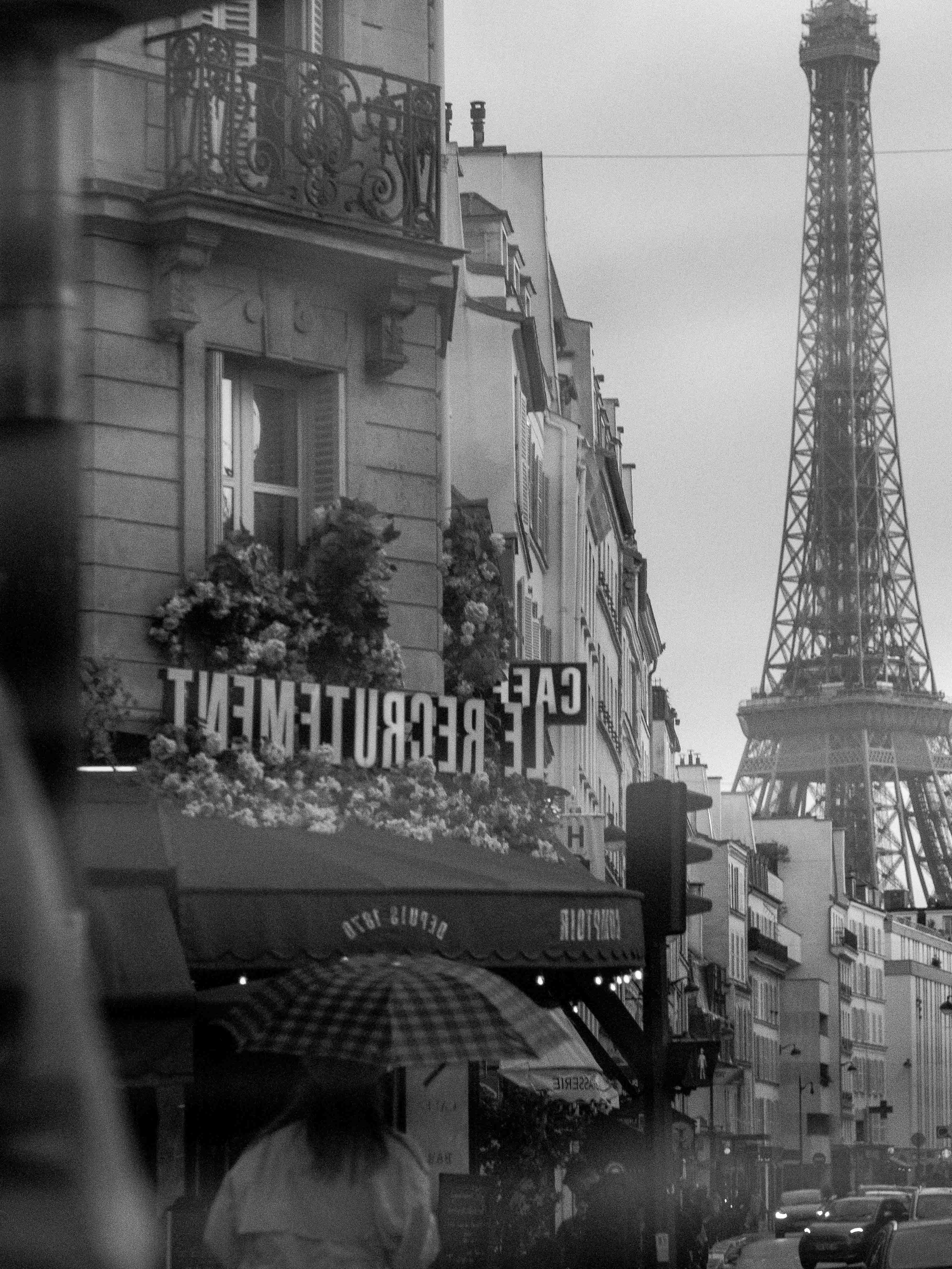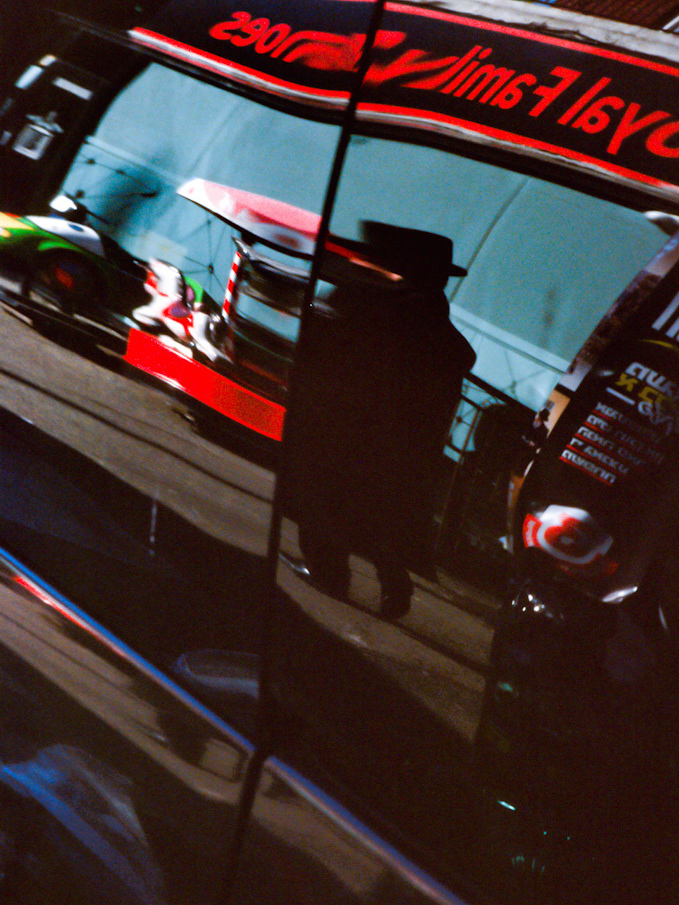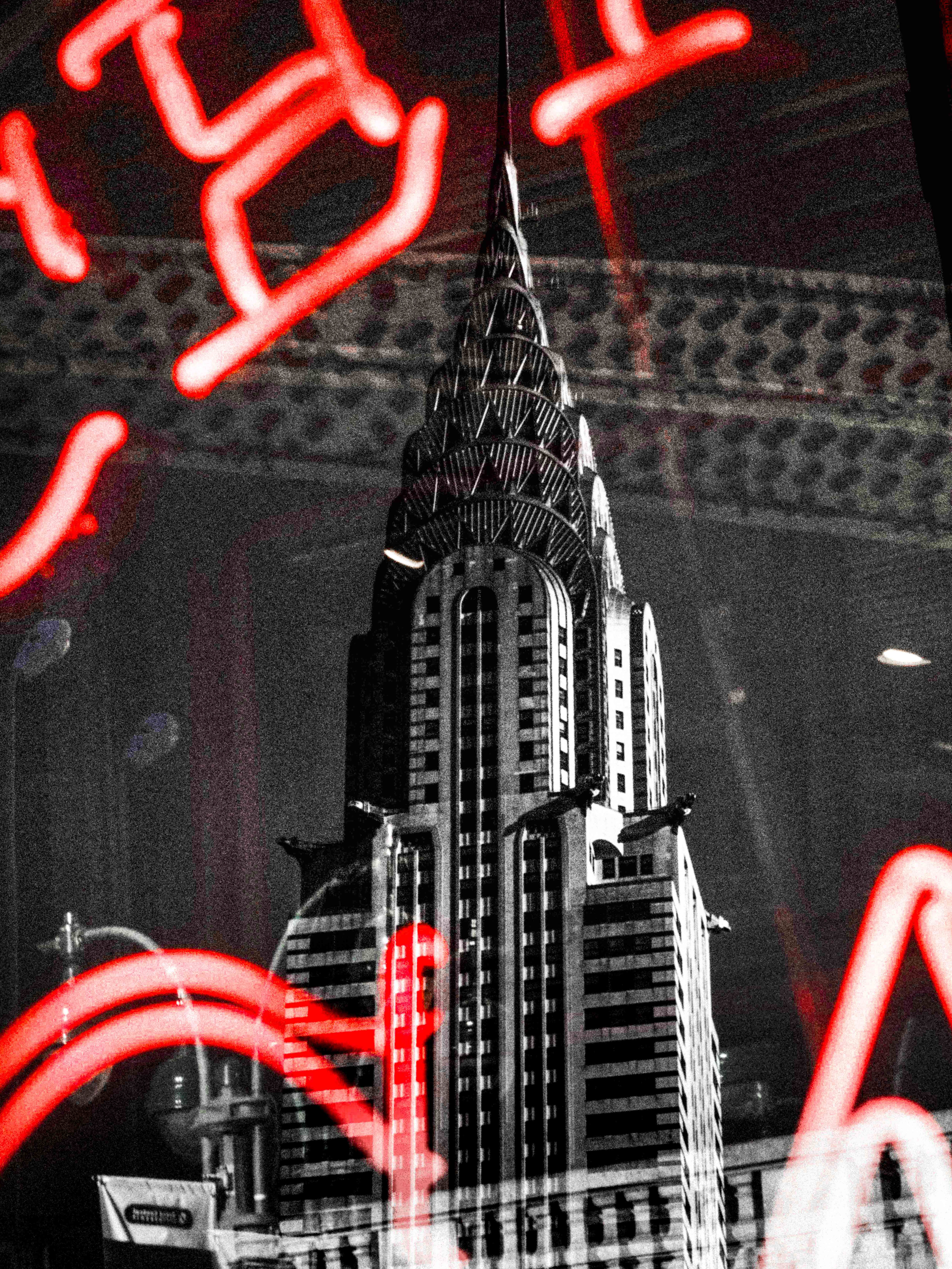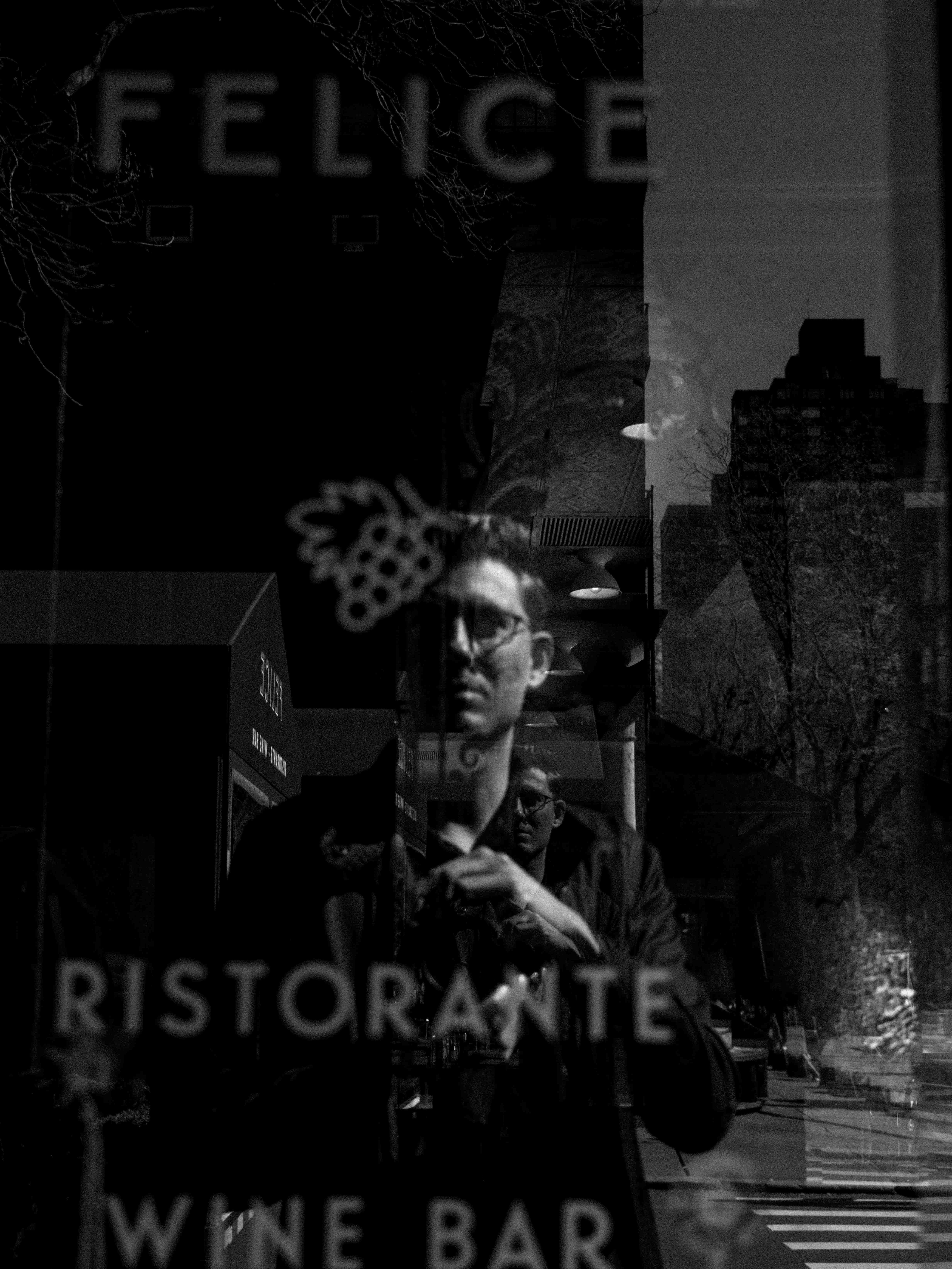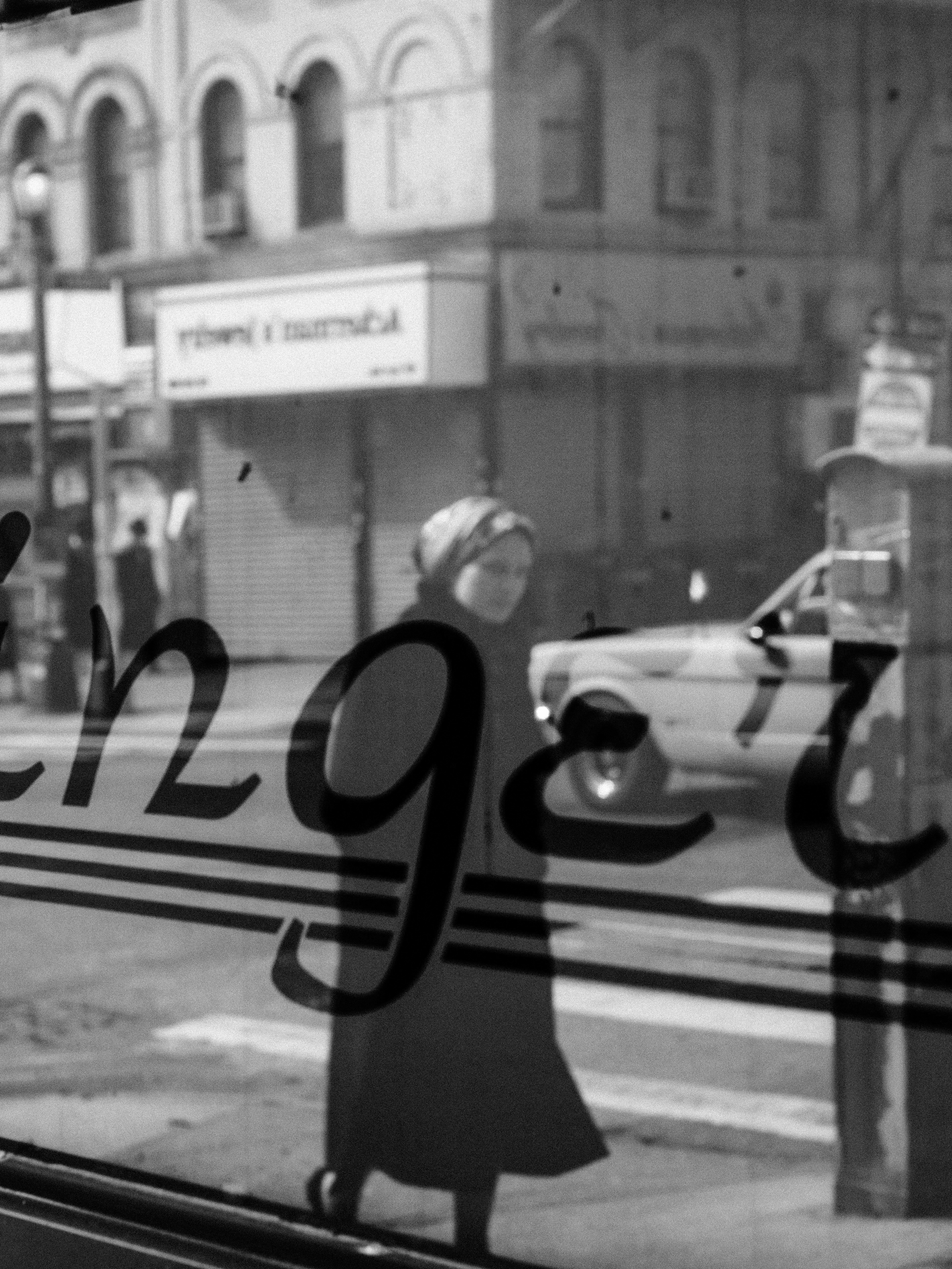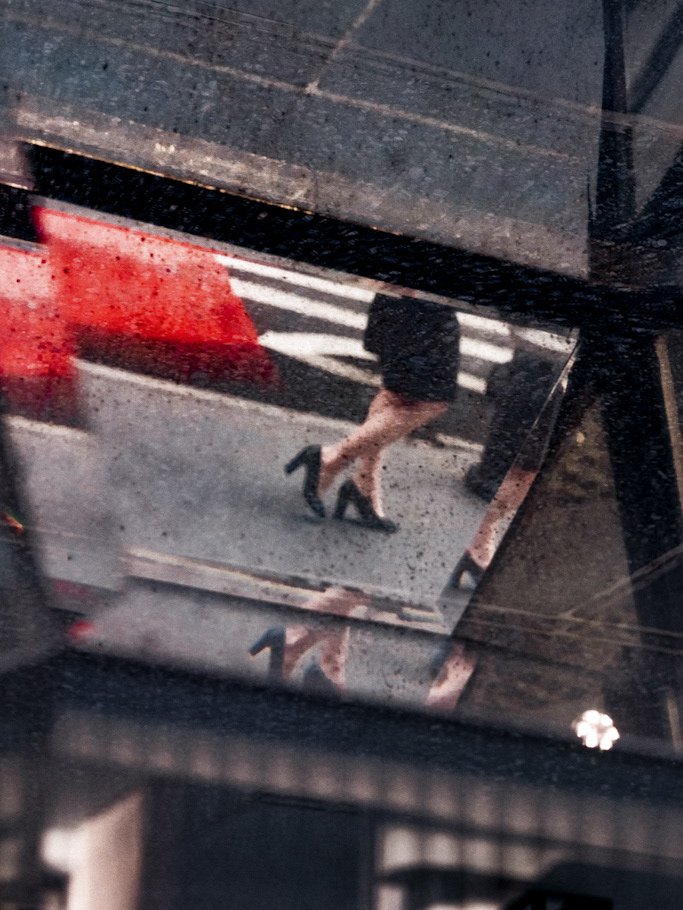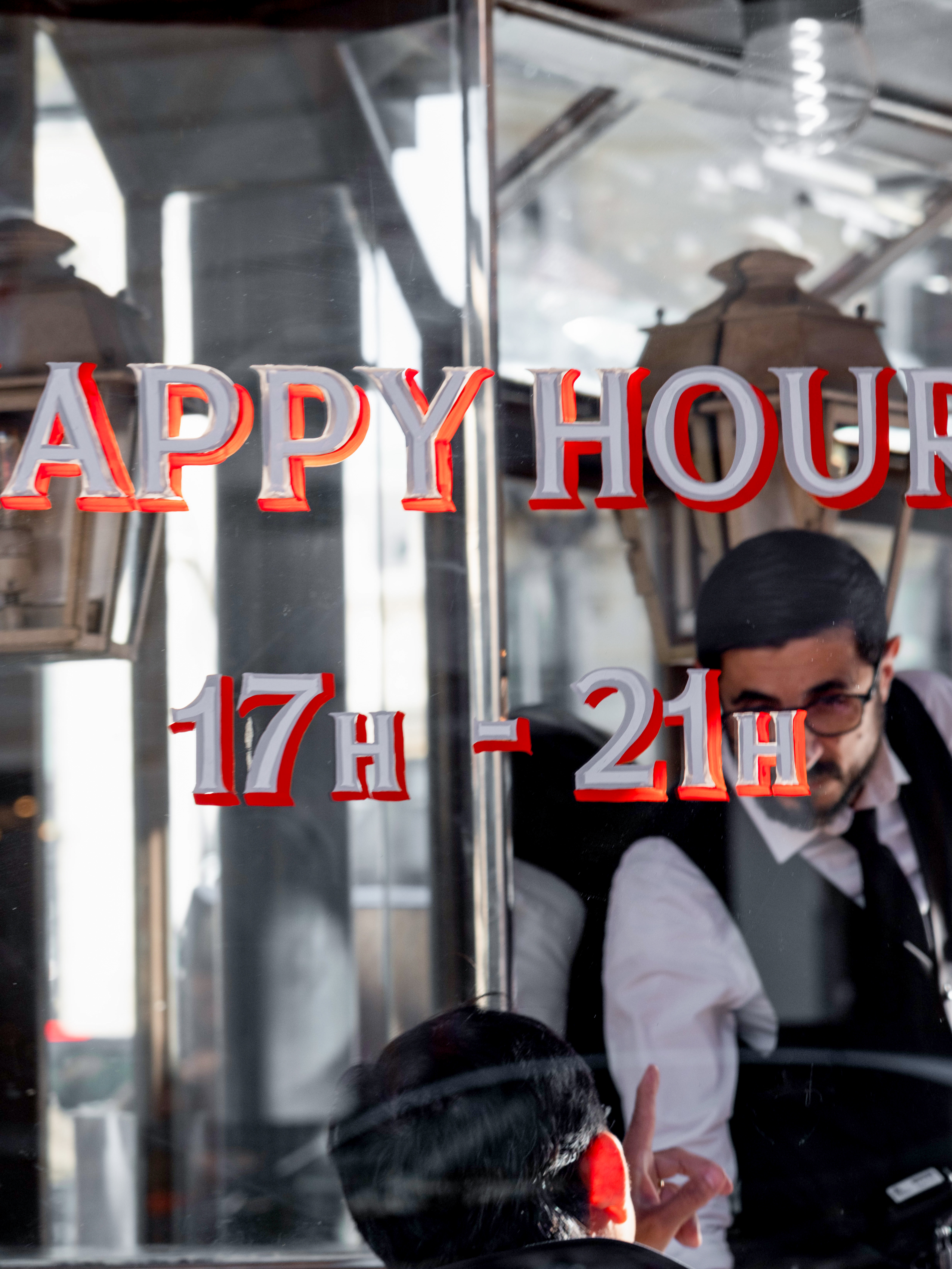















There are few places I’d rather be than in a Paris café with a camera and nowhere to be.
In a city known for elegance and rhythm, the café is its still point—a space between motion, where people come not just to eat or drink, but to exist. And for someone with a camera, that’s everything.
I didn’t fully understand the photographic value of cafés until I started spending real time in them, watching, not rushing, not waiting for a specific subject. Just being there. What makes Paris cafés so ideal for street photography is that people linger. They’re not rushing by like they are in Midtown. They’re pausing. They’re sitting. They’re lost in thought. That kind of stillness gives you room to work, to wait, to observe.
One café in particular—Café de Flore—quickly became a personal landmark. Not just because of its history, or its iconic awnings, but because of how the light hit the windows just after noon. Waiters in bow ties passed through soft curtains. Parisians leaned into conversations, oblivious to the outside world. The reflections on the glass created natural layers: gold lettering in the foreground, a waiter in the middle, a well-dressed gentleman in the background, and sometimes me, somewhere in between. These aren’t static images—they were visual poems.
The magic of shooting through café windows is that you become invisible. Reflections obscure the camera just enough to let you move unnoticed. It’s like a built-in cloak. People don’t see the lens—they’re absorbed in their espresso, their cigarette, their book. And that’s when the best images happen.
Paris café windows offer more than reflection—they offer depth. Three, sometimes four planes of visual information collide in a single frame: the script on the glass, the person inside, the city outside, and your own shadow layered across it. Photographing that isn’t easy—but when it works, it feels like you’ve captured something bigger than a moment. It feels like time folding in on itself.
I don’t chase “clean” images here. I lean into the layers. Letters cutting across faces. Signs layered over shoulders. Glimpses of the city doubled and refracted. One of my favorite images was taken through a red café awning, where the subject was split between sun and shadow, half-seen through a glass pane covered in painted calligraphy. It wasn’t traditional, but to me, it was perfect.
